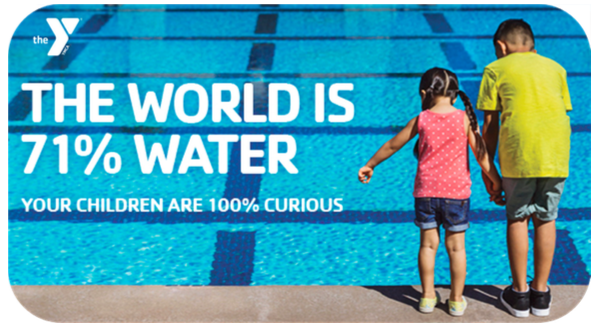By YMCA of Western Monmouth County
There is a list of basic life skills all parents instinctively know they must teach their children to keep them safe and healthy. It includes habits like looking both ways before crossing the street, washing your hands with soap and water and eating the right amount of fruits and vegetables every day. For too many parents, safety in and around water is not on the list; and that’s something we need to change.
Fatal drowning is the second-leading cause of unintentional injury-related death for children ages 1 to 14 years old. According to the CDC, about one in five drownings involve children 14 years old and younger. And, for every child who dies from drowning, another five are injured from near drownings, the CDC says.
The Y is committed to reducing water-related injuries and encourages parents to take an active role in fostering a relationship between their children and swimming—beginning with water safety. Following are safety tips to practice when in and around the water:
• Only swim when and where there is a lifeguard on duty; never swim alone.
• Adults should constantly and actively watch their children.
• Inexperienced or non-swimmers should wear a Coast Guard-approved life jacket.
• Parents or guardians of young children should be within an arm’s reach.
• Children and adults should not engage in breath holding activities.
In addition to learning lifesaving water safety skills, swimming is a great way to increase physical activity. Swimming also motivates children to strive for self-improvement, teaches goal orientation and cultivates a positive mental attitude and high self-esteem. If children know how to stay safe in and around water, swimming can be a lifelong source of fun and exercise. Instead of keeping your children away from water, help them learn fundamental water safety skills.
As a leading nonprofit committed to youth development, the YMCA of Western Monmouth County has been a leader in providing swim lessons and water safety for more than 120 years. There are a variety of programs to choose from, including youth and adult progressive swim lessons, special needs swim lessons, and a competitive swim team. To ensure that everyone has an opportunity to participate, financial assistance is available to those in need to help cover the costs.

